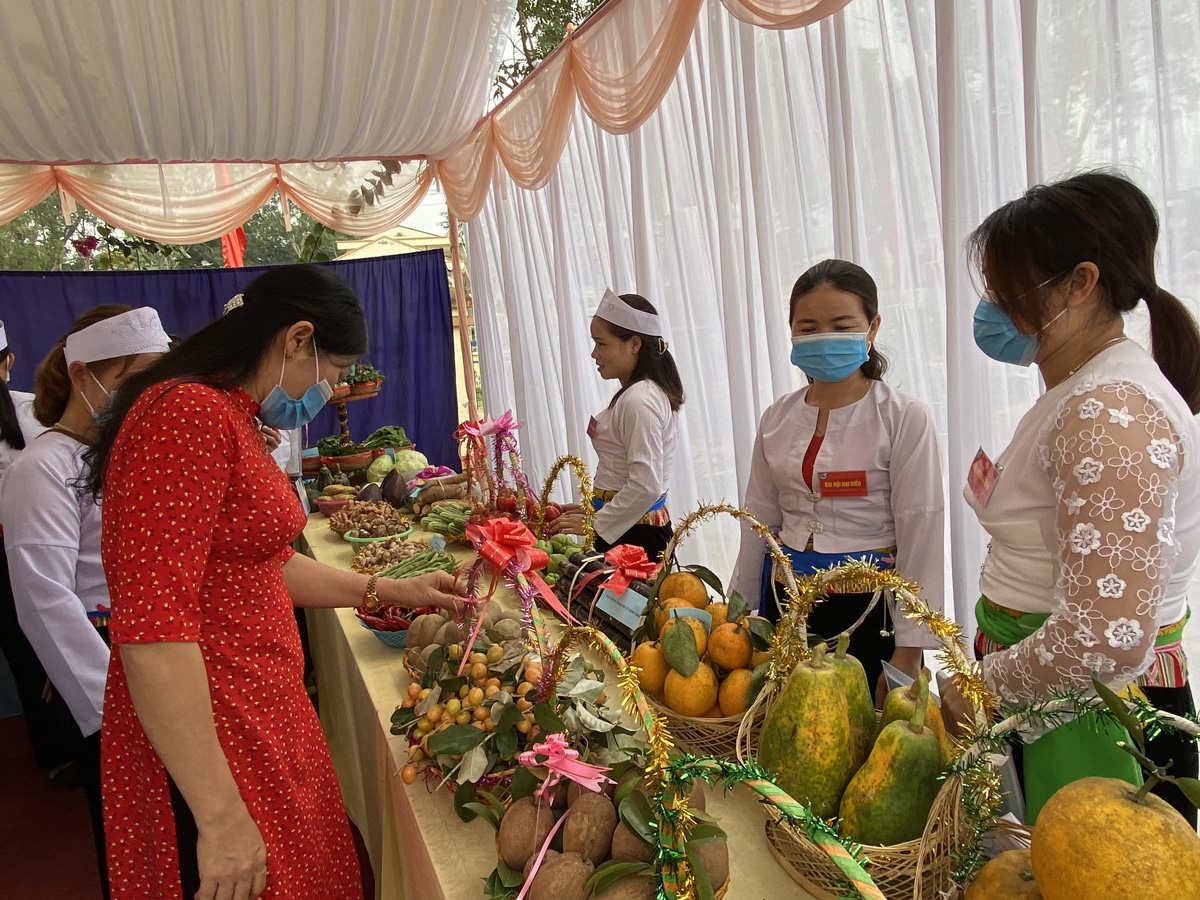


 Member
of the Women’s Union of Tan My (Lac Son) exhibit their agricultural products at
the union’s congress in the 2021-2026 tenure.
Member
of the Women’s Union of Tan My (Lac Son) exhibit their agricultural products at
the union’s congress in the 2021-2026 tenure.
Currently, the Tan My Women’s Union has more than 1,700 members in 13 sub-unions. In order to help its members to overcome difficulties and boost economic development, the union has conducted surveys to explore their difficulties and demands on developing household economy.
At the same time, the union has sought economic and business development models suitable to the conditions of the locality and the engagement capacity of local women.
The union has strengthened communications to encourage its members to promote their internal strength and actively participate in economic development and sustainable poverty reduction, while coordinating with relevant agencies to organise training courses and technology transferring in cultivation and breading activities for local women, helping them apply cooperative production models, seek market and build trademark for local products.
On the basis of Project 939 approved by the Prime Minister on supporting women’s start-up in the 2017-2025 period, and a project to give vocational training to rural labourers, the union has opened 20 training courses in science and technology, along with 21 other vocational training courses for more than 630 members. It has introduced jobs for 150 members, and assisted 5 members in launching start-ups.
Bui Thi Hanh, President of the Tan My commune Women’s Union said that over the past five years, through activities to accompany with local women in economic development and start-up, the province has seen the formation of 30 effective models, with incomes of 50-300 million VND per year. Therefore, the union has contributed to raising the per capita income to 40 million VND in 2020, and reducing the ratio of poor households to 7.4 percent currently from 19 percent in 2016./.